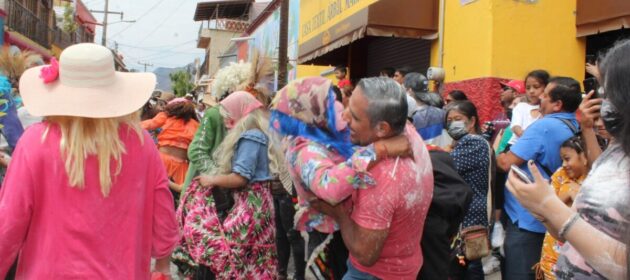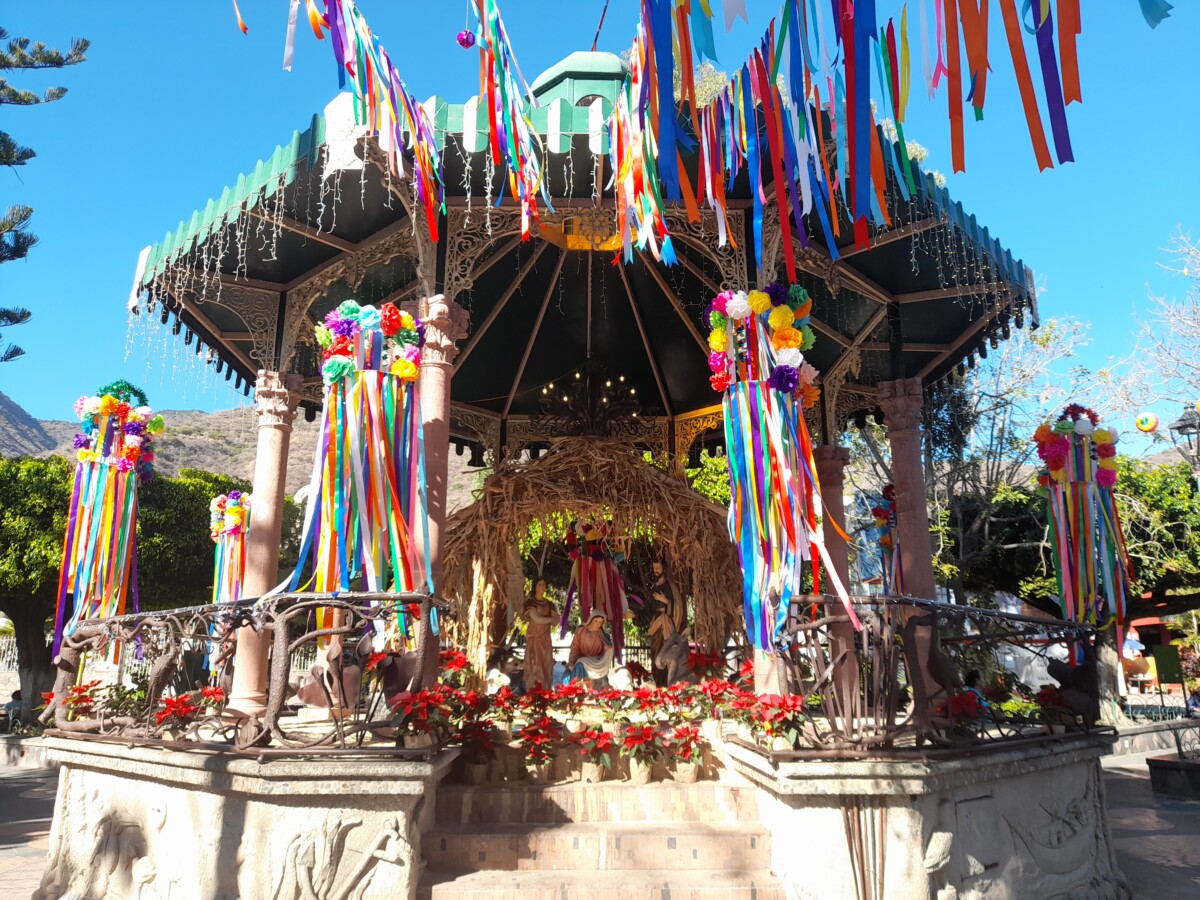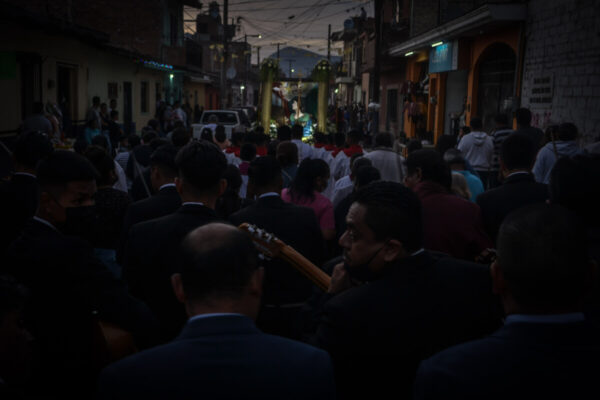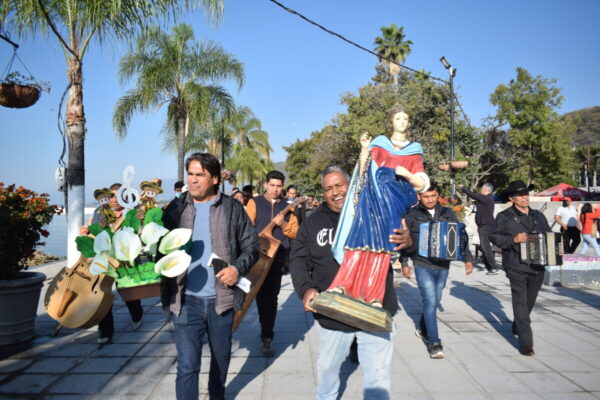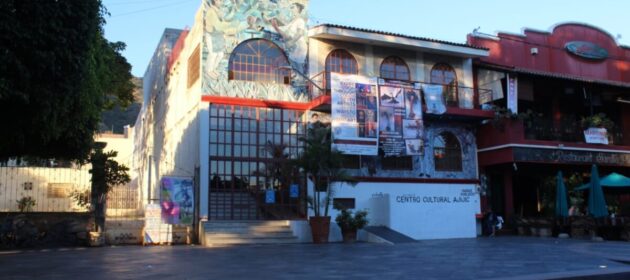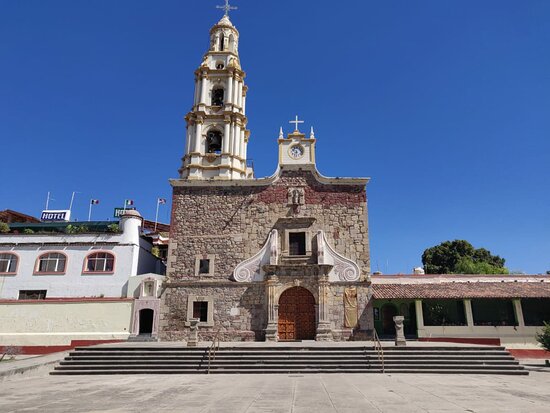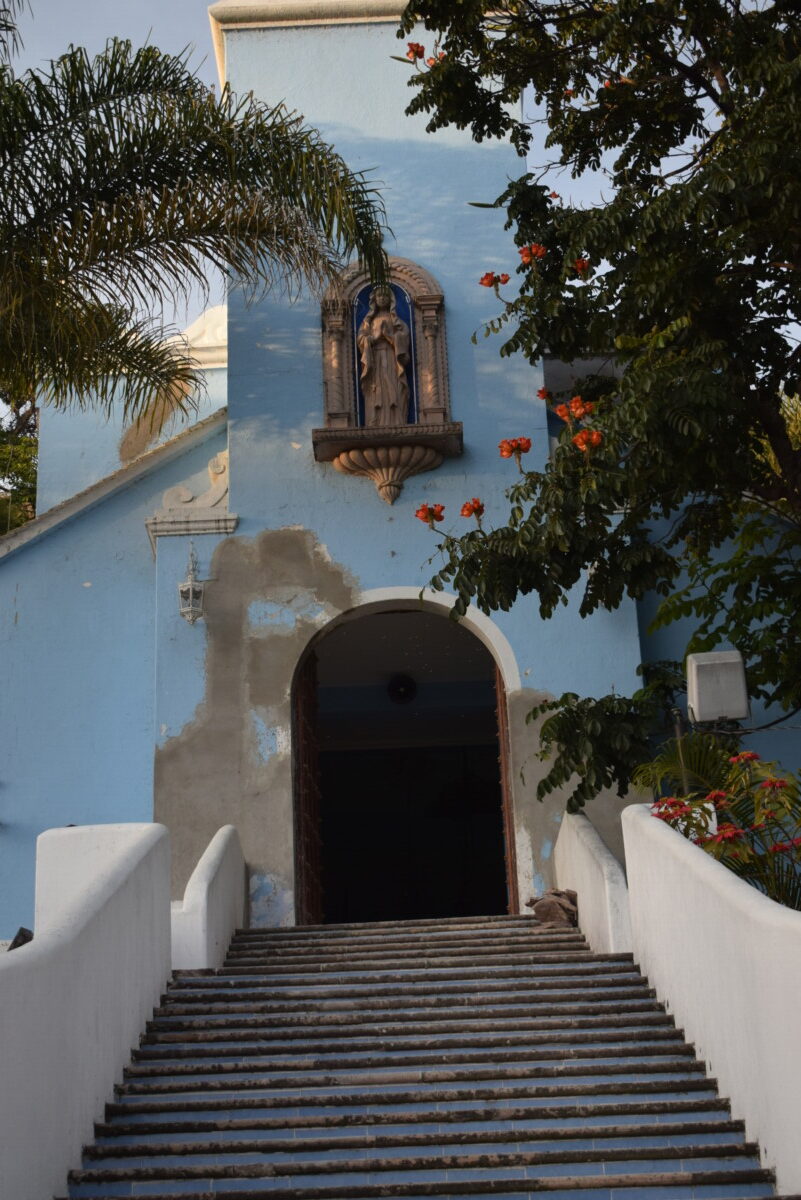identidad
Regresa el Carnaval al Pueblo Mágico de Ajijic
Las Sayacas bailaron e interactuaron con espectadores en múltiples ocasiones durante el recorrido.
Redacción.- Luego de un año de ausencia y por motivos de la pandemia, el carnaval regresó al Pueblo Mágico de Ajijic con todo su colorido, creatividad y tradición, por lo que Semanario Laguna te comparte una galería de imágenes de Sofía Medeles que muestran cómo han sido los primeros tres días del Carnaval que en ausencia de los carros alegóricos, las Sayacas y Sayacos se han lucido como nunca.

Cómo es tradición, decenas de jóvenes «cucaron» a las Sayacas con tal de que los «polvearan» con harina.

Desde el inicio hasta el fin del desfile, las Sayacas bailaron luciendo sus trajes multicolores.

Hay Sayacas que lucen coloridas faldas, son muy coquetas y se lucen bailando como las que se presentaron durante el tercer día de desfile.

Los y las jinetes también son parte importante para que un desfile sea tradicional.
Presenta Chapala el programa del Carnaval 2022
El Lienzo Charro J. Jesús González Gallo será la única sede del Carnaval de Chapala en su edición 2022. Foto: wikimedia.
Redacción.- Chapala echará la casa por la ventana. El Carnaval Chapala 2022 ya está aquí y Semanario Laguna te comparte el cartel de actividades que se realizarán en su única sede, el Lienzo Charro J. Jesús González Gallo, donde destacan presentaciones de la Banda el Pueblito en su día de apertura el 25 de marzo o la del cartel del cierre para el primero de marzo con la Banda Agua de la Llave, Banda la Incontenible, Banda Astilleros, Banda Nueva Casta y Banda La Pequeña.
Este año, regresa también el certamen y coronación de la Reina de Carnaval que no se realizaba desde el 2020 a consecuencia de la pandemia por coronavirus y la alta incidencia de contagios.
A continuación, te compartimos el cartel de los bailes, actividades, así como sus costos.
CARNAVAL CHAPALA 2022 DEL 25 DE FEBRERO AL 1 DE MARZO
Lienzo Charro “J. Jesús González Gallo” en Chapala, Jal. A partir de las 4:00 pm Niños Menores de 10 años entran Gratis.
>>> VIERNES 25 DE FEBRERO <<<
* Entierro del Mal Humor 12 pm
Banda El Pueblito
Banda Perla Azul
Toros de la ganadería de Neto Díaz *
Certamen y Coronación de la Reina de Carnaval, ameniza música de mariachi. 8 pm
Preventa especial los primeros 500 boletos a $100 pesos
Preventa normal $130 pesos Taquilla un poco más.
Habrá zona VIP teléfono 3322029359
>>> SÁBADO 26 DE FEBRERO <<<
Jaripeo Baile Julio Preciado
Mi Banda El Mexicano de Germán Román
Grupo Imperio
Banda Loma Santa
Toros Los Intocables de los Hnos. Gómez.
Preventa especial los 500 primeros boletos $250 pesos
Preventa normal $300 pesos
Taquilla un poco más.
Habrá zona VIP teléfono 3322029359
>>> DOMINGO 27 DE FEBRERO <<<
Banda Agua de la Llave
Banda la Ancontenible
Banda Astilleros
BANDA Nueva Casta
BANDA la Pequeña
Toros los explosivos de Raúl De La Torre
Preventa especial los 500 primeros boletos $200 pesos
Preventa normal $250 pesos Taquilla un poco más.
Habrá zona VIP teléfono 3322029359
>>> LUNES 28 DE FEBRERO <<<
Banda la fugitiva
Banda caña Verde
Banda la masiva
Toros Rancho San Lorenzo
Preventa especial los primeros 500 boletos $100 pesos
Preventa normal $130 pesos
Taquilla un poco más.
Habrá zona VIP teléfono 3322029359
>>> MARTES 01 DE MARZO <<<
Cierre de Carnaval
Jorge Medina
Virlan García
Banda San Miguel
La Colegiala
Preventa especial los primeros 500 boletos $300 pesos
Preventa normal $350 pesos
Taquilla un poco más.
Habrá zona VIP teléfono 3322029359
Los niños de Chapala reflejan el gusto por la tecnología en sus deseos de Navidad
Los niños de la actualidad prefieren aparatos electrónicos o videojuegos en vez de los carritos, las muñecas o los juguetes tradicionales. Foto del Juguetón 2021.
Jazmín Stengel.- Aparatos electrónicos como celulares, tabletas y videojuegos son los regalos más deseados por los infantes de la cabecera municipal este año.
En este sentido, durante el Juguetón 2021 realizado en la plaza principal de Chapala, muchos niños aprovecharon no solo a donar un regalo, sino que también compartieron sus deseos de Navidad con Semanario Laguna.
Como Víctor, de diez años, quien pidió un celular para compartir memes con sus amigos en redes sociales, o Sofía que quiere una tableta rosita porque ahora las muñecas se visten de manera digital descargando aplicaciones de moda.
Los videojuegos son algo que también se han vuelto muy populares, tanto en los más pequeños como en adolescentes. Un buen ejemplo fue Gabriel, quien a sus 15 años pidió el nuevo ‘Hallo’ para esta Navidad y accesorios para su ‘Xbox Series X’ última generación, cabe destacar que el muchacho juega alrededor de 20 horas a la semana.
De aproximadamente diez infantes con los que Semanario Laguna conversó durante el fin de semana pasado, los deseos no variaron mucho, más que en las marcas o categorías de los aparatos. La única diferencia fue, ropa, maquillaje y accesorios de moda que reflejan los deseos de las adolescentes.
Ya es raro escuchar que un niño pida una bicicleta o una patineta, ni se diga sobre los trompos o las canicas; es más, hubo quienes no conocían la matatena. Eso fue más para los adultos, quienes entre broma y broma recordaban los emblemáticos juegos de su infancia.
«Antes jugábamos a la comidita o brincábamos la soga», recordó Isabel, madre de una niña y un niño que jugaban en la plaza, mientras ella los cuidaba junto a su esposo. «Los hombres jugábamos a policías y ladrones o luchitas», agregó el caballero a la plática y quien concluyó: “¡Qué curioso! A los ‘millennials’ nos tocó estar en medio”.
Memorias de Ajijic: las Navidades del pasado
Nacimiento en el kiosco de la plaza principal de Ajijic del 2020, en el cual trataron de hacerlo de la forma tradicional.
Sofia Medeles (Ajijic, Jal.)- Las festividades decembrinas en Ajijic, no siempre han sido como lo son ahora. Según palabras del cronista de Ajijic, Eduardo Ramos Cordero, ha cambiado tanto la dinámica familiar como muchas de las tradiciones que había hace al menos 40 años.
«Hace muchos años, era diferente la celebración del 24 y 25 de diciembre. El 24, la celebración era más religiosa, ya que no se hacía la cena familiar, sino que las familias se iban a misa, por lo general de 12 de la noche, y al salir, iban a la plaza, donde un niño que representaba un ángel ponía la figura del Niño Dios en el Nacimiento, el cual solían ubicar frente a la capilla del Rosario. Después de eso, se hacía la pastorela, la gente convivía, y de ahí se iba a sus casas», comentó Lalo.
En cuanto al festejo del 25, recordó que la gente se reunía en los baldíos a convivir y a comer. Maduras amas de casa se juntaban para cocinar los llamados «tamales de piedra» o tamales mezcal, los cuales se hacían con pinole de maíz rojo y frijoles sin sal. Además, agregó que solían reunirse las mujeres en las casas de quién tenía horno para cocinar, y hacer un intercambio; «por ejemplo, le decían a la que tenía horno: ‘déjame cocinar en tu horno y yo te doy la mitad de los tamales’”.
Además, Lalo compartió una de las tradiciones perdidas de Ajijic, la cual era llevar al Niño Dios, que antes era el santo patrono del barrio de Tecoluta, y al cual se le hace una procesión desde la calle Río Zula, hasta las seis esquinas. Comentó que venían danzantes en la procesión tanto de Ajijic como de San Juan Cosalá, y que la figura del Niño era custodiada el resto del año por una madrina, que se encargaba de vestirlo y cuidarlo hasta que se tuviera que pasar a otra familia.
«En esta procesión, era muy bonito ver a los pastores con sus bastones muy grandes, que tenían hasta tres o cuatro pisos, muy bonitos, muy bien decorados, con cascabeles, campanas, papel picado y lo que tenían a la mano. Además, era una de las pocas veces del año donde los niños les dejaban comer dulce, y les daban un collar con tamales llamado tuales, los cuales eran dulces por la masa hecha con pinole.
Finalizó añadiendo que el Niño Dios de Tecolutla se perdió, y la celebración poco a poco se dejó de hacer; sin embargo, aseguró que espera que se puedan volver a realizar todas estas tradiciones perdidas y emblemáticas de Ajijic.
Con religiosidad y música celebran a Santa Cecilia en San Juan Cosalá
Durante la tarde noche del 22 de noviembre, tanto feligreses como músicos se reunieron para recorrer en procesión las calles de San Juan Cosalá. Foto: Héctor Ruíz.
D. Arturo Ortega. – La tradicional celebración a Santa Cecilia, patrona de los músicos en la delegación de San Juan Cosalá logró reunir tanto a feligreses como a músicos de la localidad quienes celebraron la fiesta de una manera religiosa a través de las calles de la población y su templo, así como con música en la plaza y convivio.
Te compartimos una serie de imágenes tomadas por Héctor Ruíz, en las que se refleja la manera de celebrar esta fiesta de los músicos, al estilo cosalense.
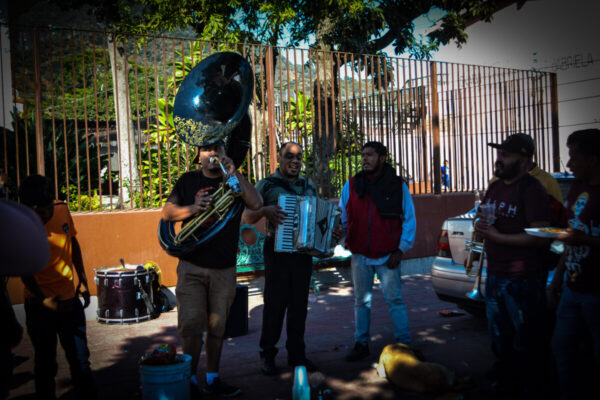
Durante la tarde los músicos se reunieron en la plaza para tocar algunas piezas musicales, donde también compartieron alimentos y bebidas.
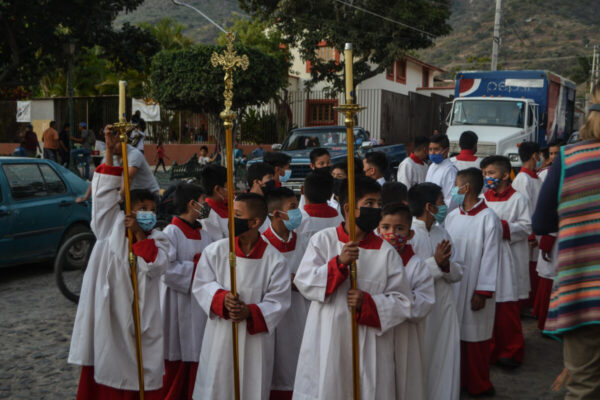
Previo al inicio de la procesión, los acólitos se preparan en formación con sus cirios y Cruz Alta.
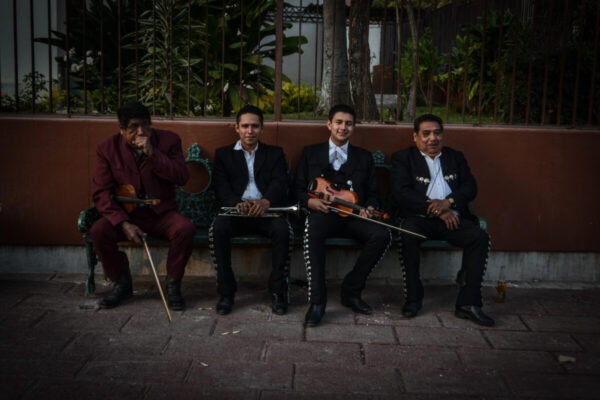
Cuatro mariacheros descansan en una banca en la plaza de la delegación de San Juan Cosalá, municipio de Jocotepec.
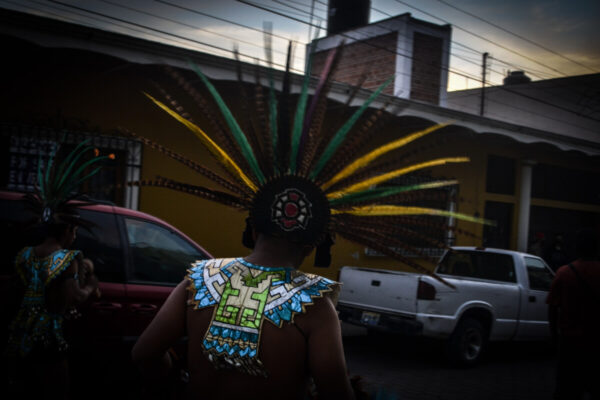
Los danzantes, como en cada procesión no pudieron faltar a la conmemoración de la patrona de los músicos, Santa Cecilia.
Tradición, fe y alegría dan vida al Día del Músico en Chapala
Luego de una misa celebrada en la Parroquia de San Francisco de Asís, los músicos llevan en un recorrido a la imagen de Santa Cecilia por el malecón de Chapala. Foto: Jazmín Stengel.
D. Arturo Ortega. – Con fe, tradición y música se vivió el 22 de noviembre, Día del Músico en Chapala, lugar donde desde muy temprano, por la mañana grupos de norteño, mariachis, tríos y solistas que laboran en los lugares más visitados de la cabecera municipal, se dieron cita en la Parroquia de San Francisco de Asís y el extremo oriente del malecón para celebrar a la patrona, Santa Cecilia.
A través de una serie de imágenes tomadas por Jazmín Stengel, te compartimos cómo la fe y la devoción se manifestó durante este día tan significativo para el gremio de la música:
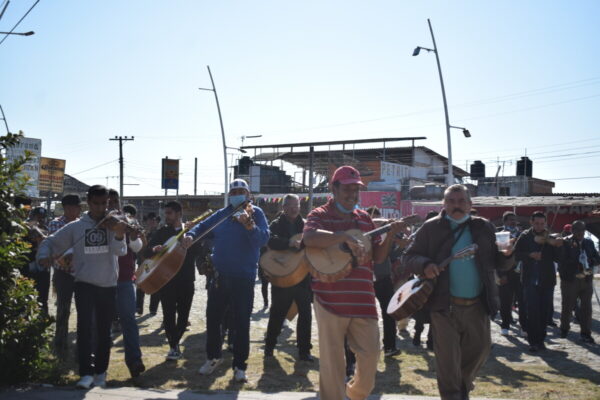
Una vez en la zona restaurantera, los músicos interpretaban canciones a petición de los lugareños de cada restaurante.
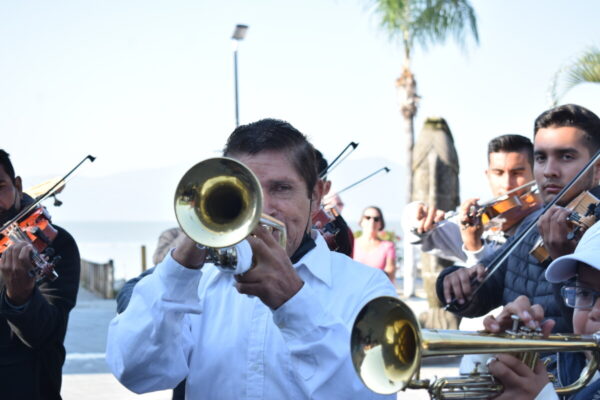
Los años de experiencia de algunos músicos son notables cuando interpretan las canciones de su repertorio.
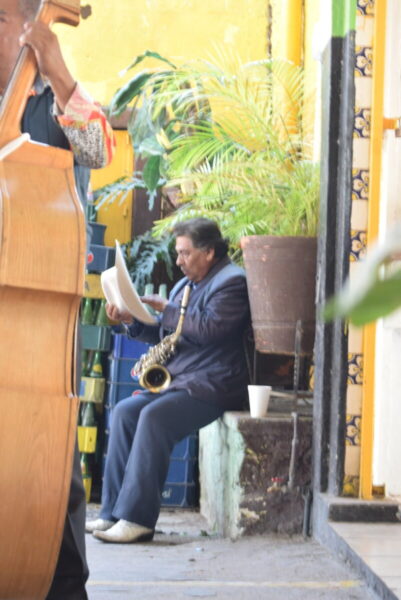
Luego de un considerable recorrido, un saxofonista de una agrupación de norteño, tomó un descanso para continuar su recorrido interpretando canciones para celebrar a Santa Cecilia.

Músicos de todas las edades acudieron a aportar un poco de su talento para conmemorar a Santa Cecilia.
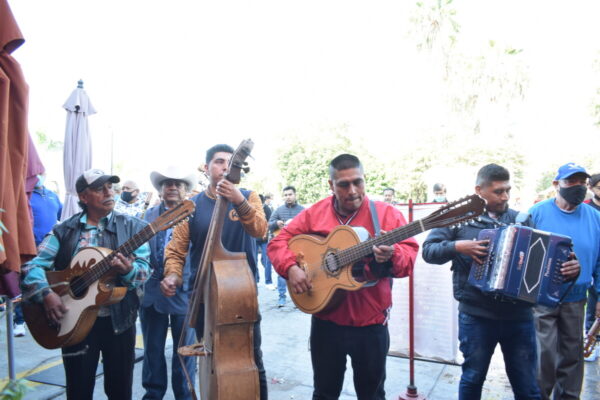
Las agrupaciones musicales que conviven en las zonas turísticas de Chapala no sólo son nativos del municipio, sino también de poblaciones circunvecinas.
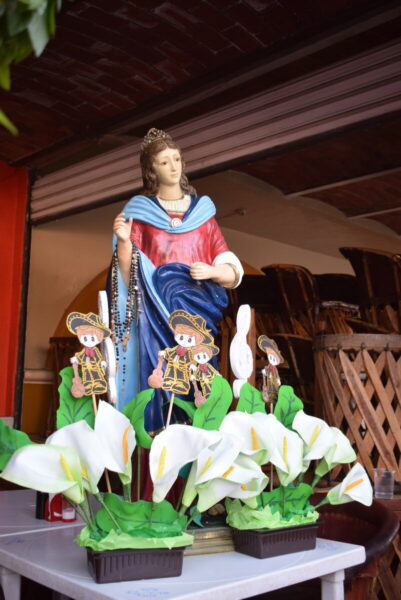
La imagen de Santa Cecilia recorrió cada restaurante antes de regresar a su capillita, ubicada en el extremo oriente del malecón de Chapala.
Citizens will be able to go to The Ajijic Cultural Center to process, renew, or replace their voter credentials.
INE will be at The Ajijic Cultural Center to provide services to voters.
Sofia Medeles (Ajijic,Jal.) – Personnel from the National Electoral Institute (INE) will be at the Ajijic Cultural Center (CCA) for citizens to renew, process, or replace their voter credentials.
The INE will be open at the CCA from November 24 to 29 (except for the weekend days of November 27th and 28th). They will be open from 9:00 am to 4:00 pm. Tokens for appointments will be issued to citizens in order of arrival.
Translated by Amy Esperanto
Ajijic’s agricultural guild in danger of disappearing
St. Andrew Catholic Church.
Sofía Medeles (Ajijic, Jal.)- With no fields to sow and no cows to herd in Ajijic, the farmers’ guild, once one of the strongest of the nine guilds, is now one of the hardest hit in the Ajijic’s patron saint festivities.
The festivities in honor of San Andrés Apóstol are held from November 22 to 30 In the Parish of San Andrés Apóstol, where the patron saint of Ajijic is located.
Semanario Laguna spoke with one of the members (of the guild. Ramona Díaz, received the media outside her house hiding her hands to protect herself from the cold, nostalgically commented that her membership in the guild is because she inherited it from her father, who inherited it from her grandfather. Senora Diaz acknowledged that the guild is one of those that has been fading the most with time.
«It used to be a robust day because there was a lot of farming and ranching, but the guild members have been doing less and less. Today there are fewer than 25 of us who cooperate, and there is no longer anywhere to plant or have livestock, that is why the festivities have been lost,» she mentioned while raising her voice a little to be able to stand out among the noise of trucks and cars passing by outside her home.
She went on to say that the only thing left is the name, because only memories of this trade remain, and they will probably be those of this last generation. «I don’t think I will pass it on to my children, because they are no longer committed to the faith or to the profession. Not only my children, many young people no longer approach religion today.»
She said that another important factor in the lack of participation not only in her guild, but in all the guilds,is the diminished the day of the youth which is a colorful day with a lot of celebration in other areas, but here it is different, because they have been leaving aside religion and customs, they only see the celebration.»
Looking to the side, she recalls a tradition that is basically lost, in which the guild on the following day, made a small procession with lanterns to get to the last mass of the day which represented that they were receiving their day. They called this the «entrada.» «It would be nice if those of us who participate in the guilds could agree to wear a shawl and wear our tresses, so we could show more of our traditions and roots.»
Finally, she called on the community of Ajijic, adults, youth and children, to get more involved in the traditions that remain since, with pride, she says it is part of what makes Ajijic magical. «Another one I remember, is the battle of the roses -men giving roses to women during the dances in the plaza. It was nice and fun. It should be done again and we could motivate them, for example, by giving a prize to the one with the most roses. Let’s not let the traditions that made us what we are die.»
Translated by Sydney Metrick.
Chavo Luna: more than a musician, a teacher of young musicians
Chavo Luna in front of his house, «The future of music is uncertain, from being dead during the pandemic now the movement is reborn».
Jazmín Stengel – Salvador de Luna Castellanos, better known as Chavo Luna, began his career at the age of eight in 1956. His interest began the day he followed the musicians he saw pass by the main avenue of his town, Chapala, dressed in suits with instruments in hand.
The pursuit of that day led the boy to the Academy of the parish of San Francisco de Asís where the community band, «Niños Héroes,» founded by the priest Raúl Navarro was rehearsing. «That’s where I began to study,» said Chavo.
Chavo found a harmony that would accompany him throughout his life. Being mostly self-taught, he sought to learn from friends and colleagues who studied at the Conservatory, such as Humberto Rivera who accompanied him for two years, helping him to complement his musical training.
The quality of his music and the few opportunities to practice his profession in Chapala during his youth, led him in the 70’s to make the leap directly to the tapatías groups. The Youth Orchestra of Guadalajara was the first to open its doors to him. After that, Chavo was part of the orchestras directed by Nano González and Enrique Reyes, both famous musicians from Jalisco.
Luna told us about one of the best moments he experienced on stage. «The first day you play a solo well the people look at you and you can hear the applause,» he said with a hidden smile and eyes lit up with nostalgia as if he were reliving that moment from the warmth of his living room.
After that day his career took off. He was a member of the Arturo Xavier Gonzalez Santana Orchestra when it split in 1981, «the best ones formed their own group and those of us who were not so good stayed,» Chavo recalled.
Shortly thereafter, the Jalisco State Symphony Orchestra called him to its elite ensemble of musicians in the city where he remained for three years. «At first I hesitated, but I wanted to fit in with the greats and I realized I had the quality,» he said with a blush.
After a fifteen-year absence, «One day my sister told me that her three children wanted to learn music. I proposed to invite seven more of their friends to form a band.» Since 1983, Luna has gathered young people in the main square of the Chapala every Sunday to form the new band of Chapala.
At that time, the now 73-year-old maestro made a crucial life decision. “Since we musicians sacrifice time and effort, I dedicated mine to develop music among the young people of the town,» said Chavo not regretting leaving the big leagues to continue his legacy with music classes for clarinet, saxophone, trumpet, trombone and all the wind instruments he masters.
The effort over 28 years has never been in vain, and even if the pay is a simple plate of pozole with a couple of tostadas, the students have always made their work worthwhile. There are 18 students who have made it to the «mero arriba,» seven are now professionals and play with celebrities such as Alejandro «El Potrillo» Fernández, La Banda San Miguel, Banda Caramelo or La Pequeño Musical.
Chavo Luna may not have achieved worldwide fame like other musicians who pursued a public image, but the persistence and dedication he has shown throughout his 52-year career, his dedication to non-profit teaching, lead him to be recognized by his people with an outdoor tribute in the main square of the Chapala capital on November 21 at 8:00 p.m., where the Chavo Luna Wind Band, directed by Chavo Luna himself, will also perform.
Musicians in Chapala are scattered, but not absent. After a year of pandemic without festivities or music, the guild of mariacheros will meet again on Monday, November 22 at the Parish of San Francisco de Asís at 7:30 a.m. to celebrate a mass in honor of Santa Cecilia, Patron Saint of all musicians.
At the end of the mass, the groups will go to the little chapel of Santa Cecilia, on Chapala’s malecon in front of La Rampa restaurant, where the mariachis gather to sing the mañanitas to the patron saint, as they do every year.
The musicians from San Antonio Tlayacapan will organize a symbolic festival to celebrate their day, bringing together bands such as Astro Norteño, La Banda Caramelo, Banda Colegiala, Mórbida, La GS Band and Polo con su guitarra, combining musical genres for all tastes.
Also, in the parish of San Antonio de Padua, a mass in honor of St. Cecilia will be held at 7:00 a.m. and at the end, the mañanitas will be in the atrium of the same parish.
Translated by Sydney Metrick.
The Lourdes Chapel will open its doors to the public after three years of being closed
The neighbors of the Lourdes neighborhood will see the doors of their chapel open to the public for the celebration of the Virgin of Guadalupe. Photo Jazmín Stengel.
Jazmín Stengel – After being closed to the public for more than three years and after six months of restoration work, the Chapel of Lourdes will finally open its doors to the public to commemorate the day of the Virgin of Guadalupe on December 12, as was done in 1940.
To date, more than 500,000 pesos (almost $24,000 USD) have been invested in the restoration work, according to the civil engineer, Enrique Petersen. These resources come from what the neighbors have been able to raise through donations, most of the time in material.
«Unlike earlier, they now prefer anonymous donations», commented Alejandra Martinez, daughter of Tere and Jose (Pepe) Martinez, neighbors of the community and treasurers of this collection. She added that many Chapalenses and foreigners have contributed their share, including Enrique Petersen who undertook the job of directing the work without charging a peso.
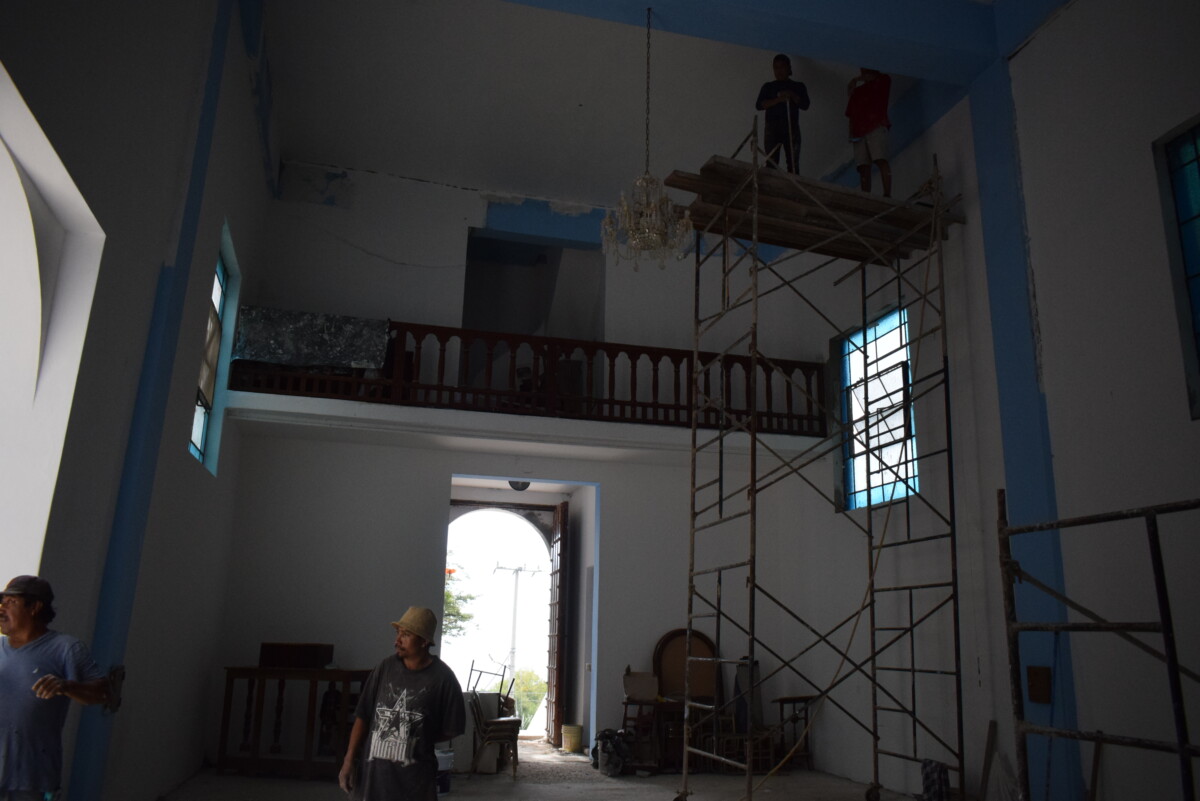
After six months of restoration work, there are still pending details of painting and finishing in the temple. Photo Jazmín Stengel.
The task has not been easy, since the labor expenses and some materials not donated tallied up to 70 thousand pesos one month, with even more expenses. The average monthly expenses remained at 20 thousand pesos, which has covered the payroll of four stonemasons.
The steady collection of resources has been maintained thanks to fairs, raffles, sales, and the monthly contributions of more than 200 pesos, which the neighbors of the neighborhood pledged to contribute.
Petersen said that when he began the plans for the restoration of the exterior, he discovered the poor condition of the foundation, and that part of the only tower was cracked.
«We started by fixing the base of the chapel and reinforcing its walls with metal and concrete, we removed the outside balcony that was pushing out one of the walls and repaired the cracks,» said the engineer, who added: «These details and water leaks from the hill impacted the infrastructure severely enough to close it in September 2019, almost 80 years after its inauguration,» he concluded.
At the end of the first stage of restoration, only cosmetic and finishing details such as painting, carpentry and gardening are pending, for which more budget is needed. However, the committee in charge, together with engineer Petersen, decided to reopen the chapel so that the community can see what has been achieved.
The chapel was built in 1940 by Guillermo González Hermosillo y Brizuela, who led the cooperation between the neighbors of Colonia Francesa and the Ixtle neighborhood to make possible the construction of the sanctuary.
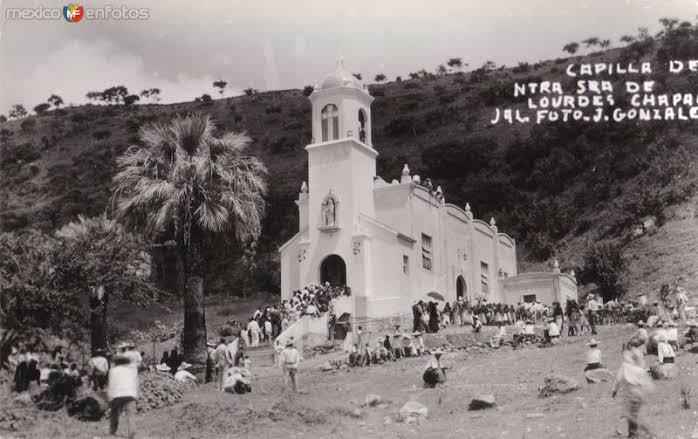
Photograph of the first years of the Lourdes Chapel. Photo: J. González.
Now it is the turn for the second generation of neighbors, the heirs of the luxurious country houses in Colonia Francesa and the inhabitants of the renowned neighborhood of Lourdes in Chapala, named in honor of their patron saint. These neighbors continue the restoration of the shrine week after week by selling churros, fritters, and sweets outside after mass, and others by making extravagant anonymous donations.
The fundraising work continues to help fund the remaining restoration work, and the next fair is already planned to be held on November 28 outside of the Parish of San Francisco de Asis. Another fair is planned for December 5 outside of the Chapel of Lourdes.
Translated by Kerry Watson.
© 2016. Todos los derechos reservados. Semanario de la Ribera de Chapala
